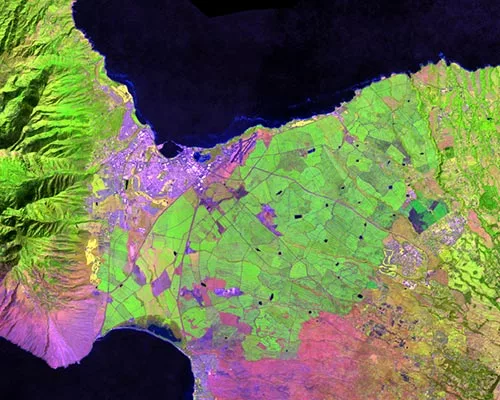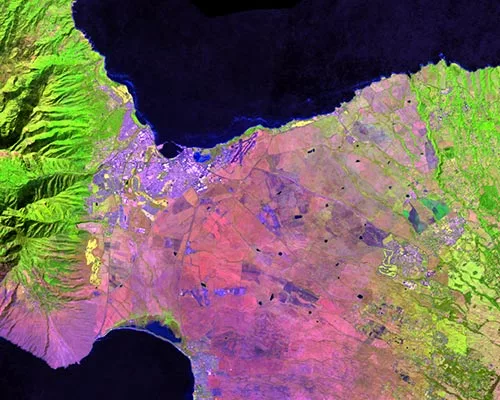In the wake of the devastating wildfire that struck Lahaina in early August 2023, University of Hawaiʻi researchers have launched a groundbreaking initiative to revolutionize disaster monitoring and response in the agricultural sector. The AgriWatch project is funded by a $268,472 grant from the U.S. Department of Agriculture National Institute of Food and Agriculture’s (USDA-NIFA) Rapid Response to Extreme Weather Events Across Food and Agricultural Systems program.
“The unprecedented destruction, loss of life and extensive damage to Maui’s agricultural areas revealed a critical need for real-time monitoring and accurate disaster impact assessments,” said Qi Chen, project director and geography professor in the College of Social Sciences at UH Mānoa. “The goal of AgriWatch is to understand vulnerabilities, mitigate risks and foster resilient agriculture practices by developing rapid response and impact monitoring and assessment capabilities for disasters related to fire and agriculture in Hawaiʻi.”
Innovative methods and technologies
The research team will incorporate the latest technologies in Artificial Intelligence (AI), satellite remote sensing, cloud computing and web applications to map crop types, fires and vegetation conditions. This includes:
- Developing high-resolution crop data layers for 2023 and 2024 using proven deep learning methods, which have been successful in California and Texas, and adapting it for Hawaiʻi.
- Assembling high-resolution fire and vegetation condition maps using AI and Machine Learning models.
- Creating a Google Earth Engine-based online disaster monitoring and impact assessment platform that integrates multi-sensor Earth observation and geophysical data, enabling near real-time disaster monitoring and impact assessment.
Collaboration and education
To maximize efficiency and data collection, collaborations are planned with farmer-supporting organizations statewide to provide outreach and training in the use of the data and tools. Organizations include Hawaiʻi Farmers’ Union United, Hawaiʻi Farm Bureau, the Hawaiʻi Food Hub Hui and the UH Cooperative Extension Services. High school and undergraduate students, including from the Hawaiʻi State 4-H program, will also be invited to actively participate in research activities.
AgriWatch will fill knowledge and data gaps in crop types, provide open data access and online tools for near real-time disaster monitoring and assessment, restore food production and mitigate disaster risks. Current plans are to have the project developed and ready to use by November 2024.
“AgriWatch will improve understanding of vulnerabilities, develop resilient agricultural practices, and empower farmers and decision-makers for rapid responses to future disasters,” said Zhe Li, project co-director and geographer with the USDA. “By integrating state-of-the-art technologies, collaboration and education, the initiative aims not only to address the aftermath of the Maui fire disaster, but to also build a foundation for a more resilient and adaptive agricultural landscape.”
In addition to Chen and Li, members of the research team include:
- Zhengwei Yang, project co-director and geographer with USDA.
- Haonan Chen, project co-director and assistant professor of electrical and computer engineering at Colorado State University.
- Noa Lincoln, project co-director and associate researcher in the Department of Tropical Plant and Soil Science in UH Manoa’s College of Tropical Agriculture and Human Resources.
- Changyong Cao, project collaborator and chief of NOAA’s Satellite Calibration and Data Assimilation Branch in Satellite Meteorology and Climatology Division.

